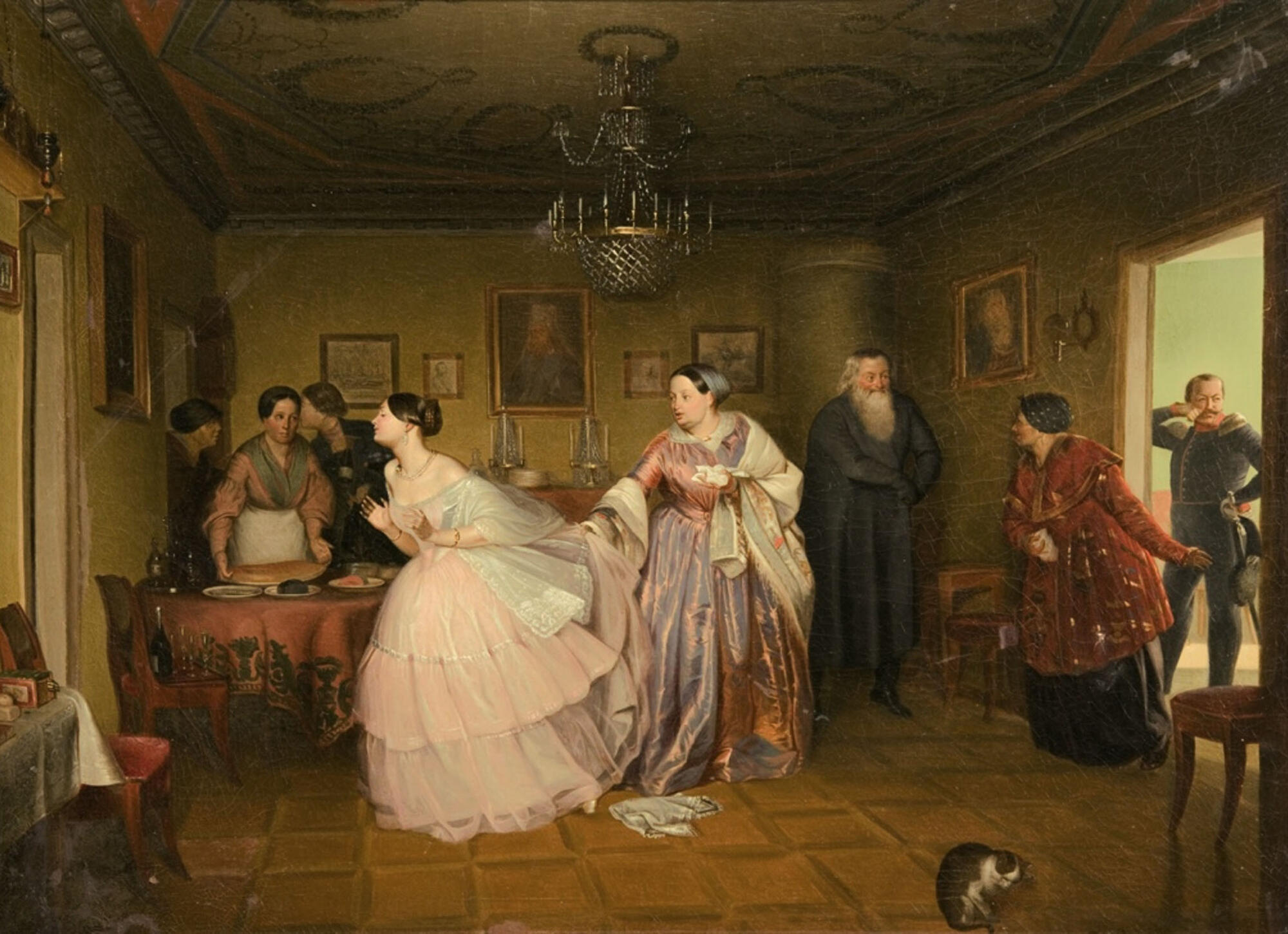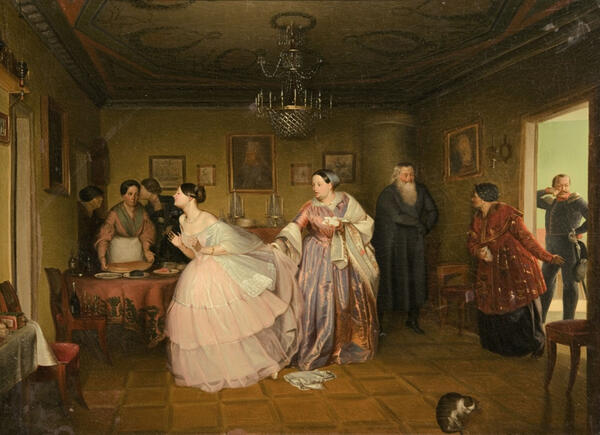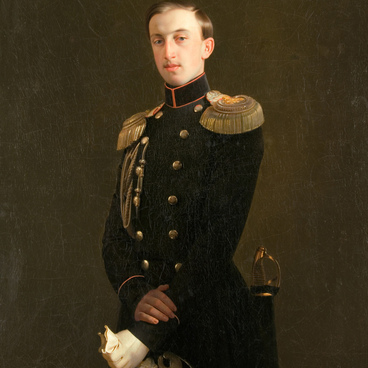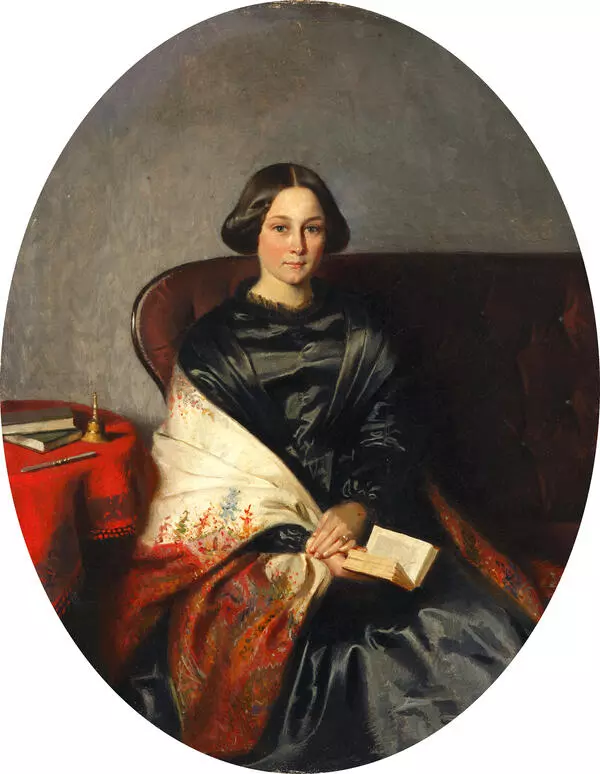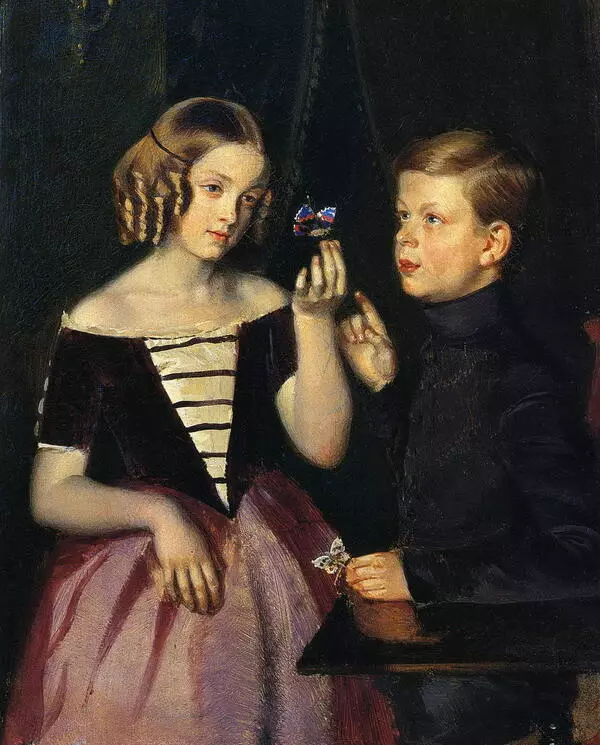In October 1849, Pavel Fedotov (July 4, 1815 - November 26, 1852) presented with tremendous success the work “Amendment of Circumstances, or Betrothal” at the exhibition of the Art Academy. Later, the painting acquired other titles: “The Marriage of a Major, ” “The Arrival of the Groom, ” “Bride show in a Merchant House”, until its current name was approved. Supposedly, the canvas in the collection of the Taganrog Art Museum is the author’s copy made in the 1840s-1850s. A betrothal scene is depicted in the hospitable living room of a wealthy merchant’s house. The viewers “have a feeling that we accidentally looked through the window and caught the owners of the house in a form that is not intended for the stranger”s eye”. The painting depicts eight characters carefully painted by the artist.
The whole scene of the painting shows that there were negotiations with the bride’s parents, held by the matchmaker in advance. The groom seems to be awaited with great impatience. The room is full of turmoil and fuss with the last preparations to meet the long-awaited visitor. On the right side, at the doorway, there is a major who intends to ask for the hand of the merchant’s daughter. In the central group of characters there are the merchant’s daughter (future bride) and her mother, with the merchant standing behind, in the corner of the room. The scene is full of movement, with the frightened and confused daughter rushed away by the groom’s unexpectedly appearance. The mother holds her by the dress to prevent her escape.
On the left side of the room there are three minor characters next to the table with snacks: a cook who is putting a pie on the table, a sitter with a bottle of wine, and a dependent leaning out the door.
To describe the plot, Fedotov composed a poetic work, a hybrid between a song and a welcoming speech. The author’s description finally assured the viewer of the satirical nature of the genre work, which exposed the mercantilism of the modern artist of society.
Like any good satire, Fedotov’s approach has not lost its relevance today, after more than a century.
The whole scene of the painting shows that there were negotiations with the bride’s parents, held by the matchmaker in advance. The groom seems to be awaited with great impatience. The room is full of turmoil and fuss with the last preparations to meet the long-awaited visitor. On the right side, at the doorway, there is a major who intends to ask for the hand of the merchant’s daughter. In the central group of characters there are the merchant’s daughter (future bride) and her mother, with the merchant standing behind, in the corner of the room. The scene is full of movement, with the frightened and confused daughter rushed away by the groom’s unexpectedly appearance. The mother holds her by the dress to prevent her escape.
On the left side of the room there are three minor characters next to the table with snacks: a cook who is putting a pie on the table, a sitter with a bottle of wine, and a dependent leaning out the door.
To describe the plot, Fedotov composed a poetic work, a hybrid between a song and a welcoming speech. The author’s description finally assured the viewer of the satirical nature of the genre work, which exposed the mercantilism of the modern artist of society.
Like any good satire, Fedotov’s approach has not lost its relevance today, after more than a century.
